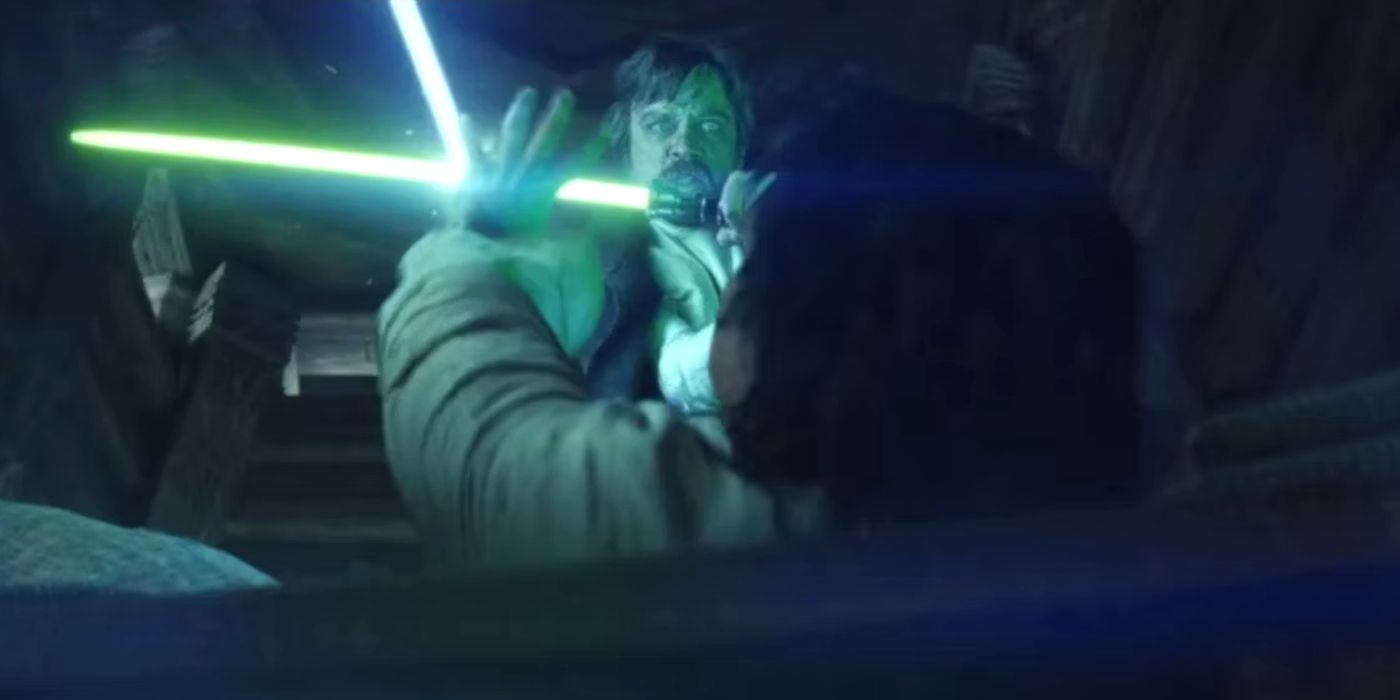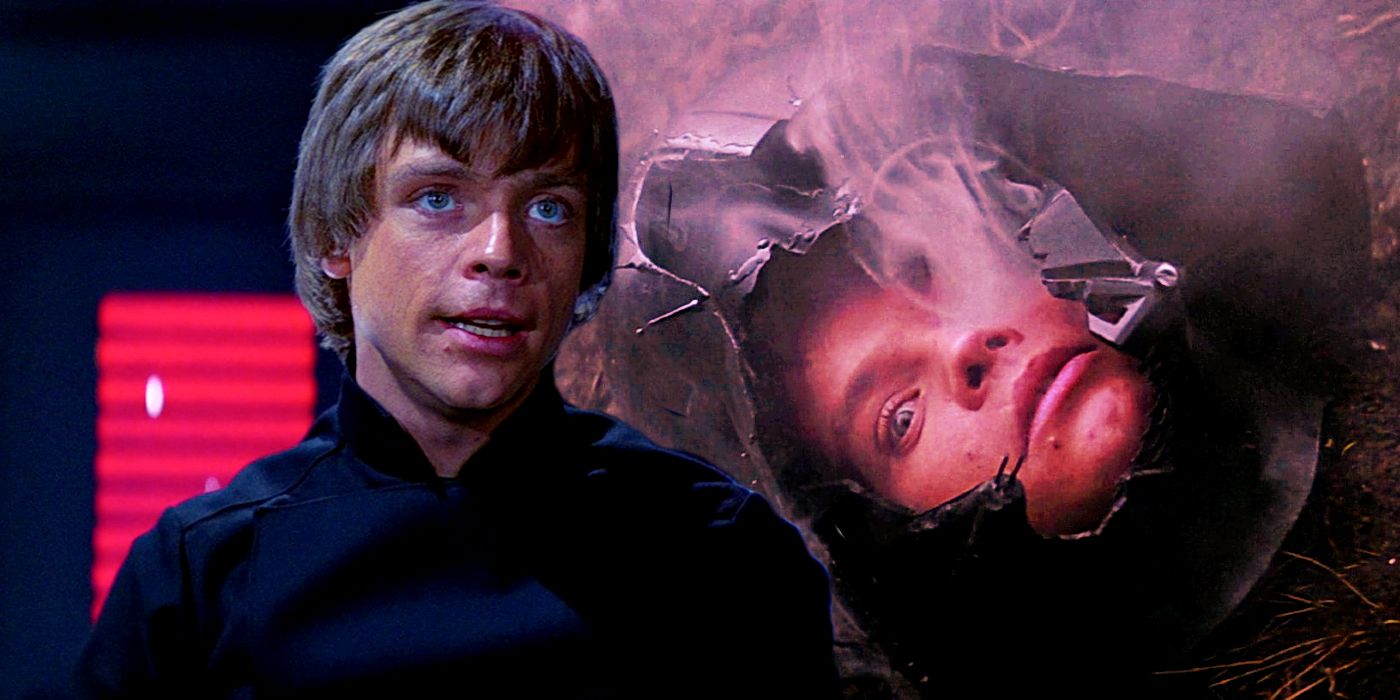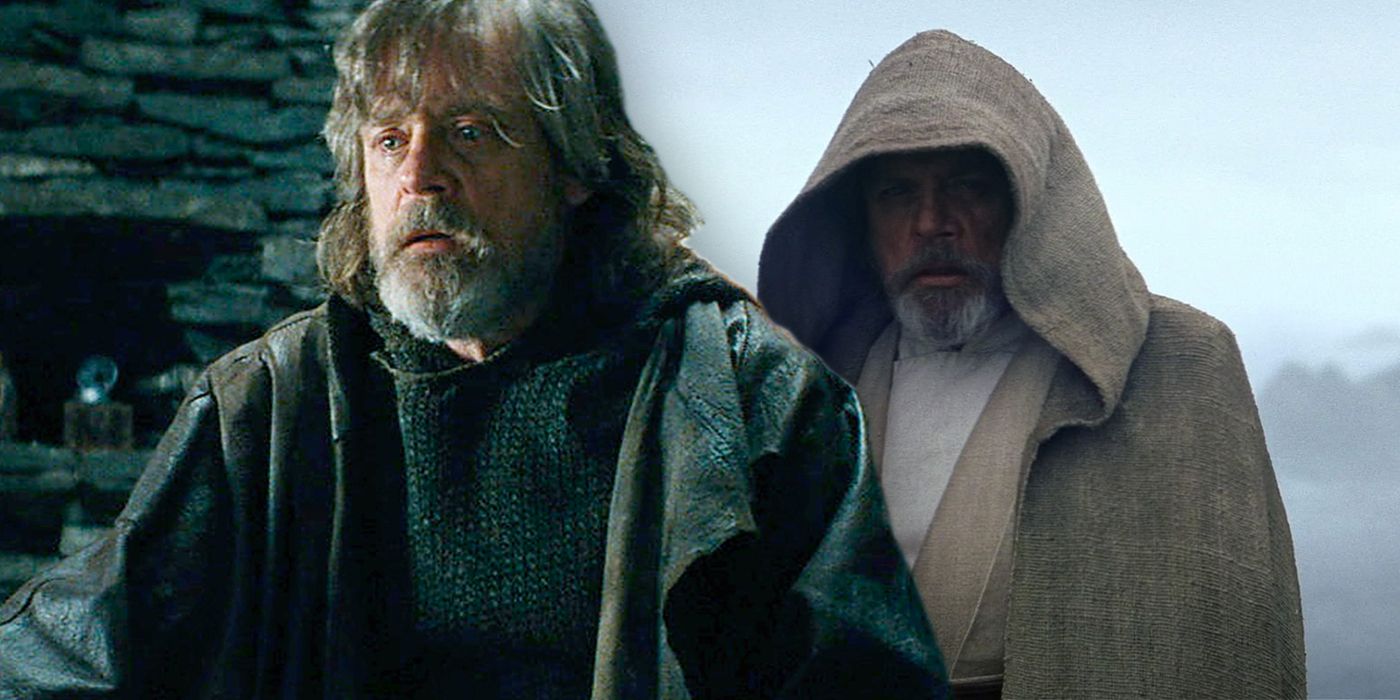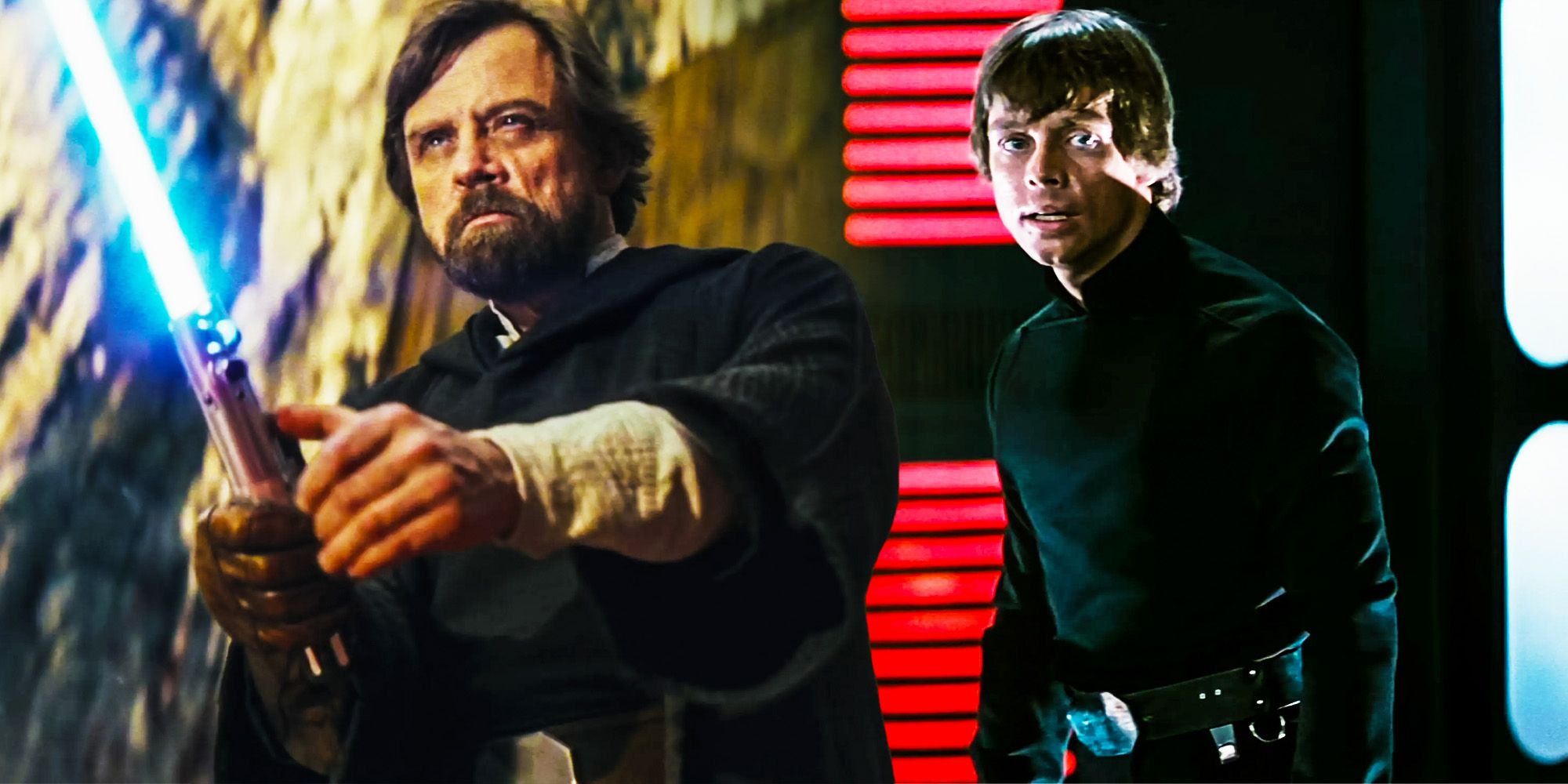One of the most controversial elements of Luke Skywalker’s story in the Star Wars sequel trilogy actually saved the character’s entire narrative arc. The massive popularity of the Star Wars franchise has made Luke Skywalker one of the most iconic characters in all pop culture. First introduced as the hero of 1977’s Star Wars, Luke’s quest to help the Rebel Alliance topple the Galactic Empire formed the basis of the original Star Wars trilogy, with Return of the Jedi seeing him overcome the evil Emperor Palpatine and save the galaxy. Yet, despite this central position within Star Wars lore, some criticism has often been reserved for Skywalker’s character.
Luke Skywalker’s story continued in the divisive Star Wars sequel trilogy, with the legendary Jedi Master training a new generation of Force users as the galaxy is once again beset by the forces of evil. Though the Star Wars sequel trilogy focused on a new set of characters, Luke Skywalker’s story was still central to the franchise’s overall narrative, particularly as the sequels were written to round out the Skywalker saga. A number of creative decisions were made to facilitate the sequel trilogy’s story, many of which proved controversial – particularly where the legacy heroes from the original trilogy were concerned.
One of the most controversial decisions was the way the sequels explained Luke Skywalker’s story in the intervening years between Return of the Jedi and Star Wars: The Force Awakens. Having Skywalker train his nephew Ben Solo in the ways of the Force only to have the boy tempted by the dark side led to Luke attempting to murder his student – which in turn prompted Skywalker’s self-imposed exile on Ahch-to and his decision to close himself off from the Force – was a particularly divisive decision. Giving Luke Skywalker a dark backstory for the sequel may have felt unearned, but it was actually better for his character arc as a whole, because it added a layer to his character that the original trilogy tried and failed to establish. Luke’s internal conflict in the sequel trilogy was actually one of the better elements of his arc in the Skywalker saga, making the controversial Star Wars sequel choice far better than it seems.
Luke Trying To Murder Ben Solo Is His Darkest Moment

By having Luke Skywalker fail his Jedi student (who also happens to be his nephew), the Star Wars sequels gave him his darkest moment. Giving in to his fear and attempting to kill his own nephew is by far the worst thing that Luke Skywalker does within the Skywalker saga, and is probably the closest the character comes to being tempted by the dark side of the Force. Though the moment itself happens before the events of the Star Wars sequel trilogy, it directly feeds into Kylo Ren’s story in the movies, serving as the character’s justification for joining the First Order.
After Ben Solo learned that Darth Vader was his grandfather, he began to give in to the dark side of the Force, which in turn prompted Luke to make an attempt on his student’s life while Solo slept. When he failed, Solo fell to the dark side, destroying Luke Skywalker’s Jedi Temple and adopting the name of Kylo Ren. Luke’s brief lapse of judgment led to Ben Solo fully embracing dark side, and his momentary intention to murder his own student was a moment of darkness and shame for the revered Jedi Master, making it the darkest part of his entire story.
The Original Trilogy Never Gave Luke Any Real Internal Conflict

The internal conflict that Luke controversially grappled with in the Star Wars sequels was something that was largely missing from his original trilogy story. Unlike many other Star Wars heroes, Luke never had a defining moment of conflict in which good won out over evil – instead, he almost always acted with the purest of intentions. Luke’s training with Yoda was decidedly short, with the young Jedi proving exceptionally gifted in the Force and particularly receptive to Yoda’s teachings.
Key moments in the original Star Wars trilogy saw the villains attempting to sway Luke to the dark side, but he was always distinctly resistant to the idea. His greatest moment of conflict was perhaps learning of his parentage in The Empire Strikes Back, and even then, he flatly refuses to join Darth Vader. Return of the Jedi sees Luke master his emotions even further, helping redeem Anakin Skywalker by overthrowing Emperor Palpatine. There is no point in the original Star Wars trilogy in which Luke Skywalker is legitimately tempted by the dark side, making him seem like the franchise’s most incorruptible hero.
Why It Was Important For The Sequels To Give Luke A Dark Past

As the sequel trilogy built up to Luke Skywalker’s Star Wars death, it was important for him to undergo some form of internal conflict. Establishing the dark backstory for his time training young Jedi was key, because it proved an important part of his role in the sequels, particularly with regard to Rey. By introducing the idea that Luke had been forced to cut himself off and live in exile due to his role in creating Kylo Ren, Star Wars made him a reluctant mentor, which in turn fed into Rey’s own story and her experience with the Jedi Order.
Ensuring that Luke had endured some form of internal conflict was an important part of establishing Luke Skywalker’s story in the sequel trilogy. The character’s dark past was the reason for his reluctance to train Rey, and her zeal served as a counterpoint to his hesitance. This represents the dysfunction that Luke perceives in the Jedi Order, and contributes to his decision to burn the sacred Jedi texts. Giving Luke a dark past was critical in laying the foundation for his final Star Wars arc, because it subtly introduced his disillusionment with the ways of the Jedi.
How Luke’s Dark Side Temptation Saved His Star Wars Story

By introducing an element of conflict to Luke Skywalker’s arc, the sequel trilogy ultimately made the character’s Star Wars story better. In the original trilogy, Luke Skywalker was a representation of the purity of the Jedi, but having him become conflicted by the moral complexity of the Force actually served the character far better. The idea that Luke Skywalker became less morally pure after Star Wars‘ original trilogy contributed to a more satisfying follow-up for the character.
Though the sequels could have handled Luke’s arc better by exploring the idea more thoroughly, having him tempted by his darkest emotions was an excellent creative decision. By having Luke’s brief moral failings feed into not just his own story, but Kylo Ren and Rey’s as well, his own moral stumbling became the backbone of the sequels’ narrative arc. In this, giving Luke Skywalker a controversial dark past was actually a sound decision, because it contributed massively to the Star Wars sequel trilogy’s message of balance in the Force and subtly set up the franchise’s new era of Force users.




